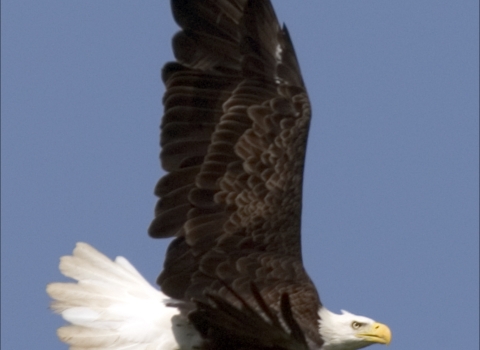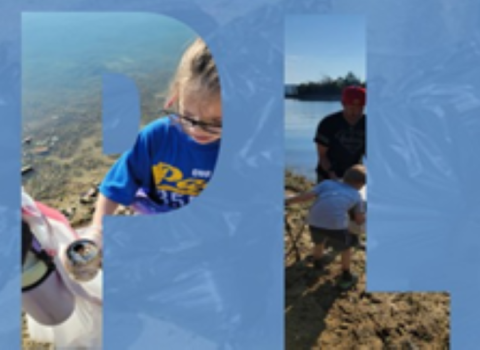Kalo farming is an important part of the Hanalei National Wildlife Refuge (NWR), with approximately 160 acres of the 917-acre Refuge currently under special use permit for kalo farming. Kalo farming existed prior to the establishment of the Refuge and continues to be an important part of the area’s agriculture, with more than 40 percent of the entire supply for the State of Hawaiʻi being produced on the Refuge. Kalo has significance to the environment, economy, and culture in Hawai‘i. Kalo farming in the Hanalei Valley has endured for many centuries.
The Hanalei NWR was established in 1972 to protect and recover threatened and endangered species, including the koloa maoli or Hawaiian duck (Anas wyvilliana), ‘alae ke‘oke‘o or Hawaiian coot (Fulica alai), ‘alae ‘ula or Hawaiian moorhen (Gallinula chloropus sandvicensis), ae‘o or Hawaiian stilt (Himantopus mexicanus), and Hawaiian goose or nēnē (Branta sandvicensis). Kalo farming has continued under special use permit since that time and the U.S. Fish and Wildlife Service (Service) is proud to be a part of working with local farmers to continue this tradition on the Refuge, while working together to ensure that the farming remains compatible with the conservation and recovery of the threatened and endangered species that the Refuge was established to protect.
U.S. Fish and Wildlife Service The Hanalei NWR provides benefits for kalo farmers on the refuge, including: 1) charging a small fraction of the current market rate for their special use permit ($25/acre/yr); 2) not requiring resident farmers to pay property tax for their homes; 3) charging permit fees only for “wet acres,” which does not include acreage used for residences, garages, storage sheds, rice mill, gardens, etc.; 3) maintaining the Refuge’s main irrigation system; 4) helping to maintain primary access roads on the Refuge; 4) providing help with invasive species invasive species
An invasive species is any plant or animal that has spread or been introduced into a new area where they are, or could, cause harm to the environment, economy, or human, animal, or plant health. Their unwelcome presence can destroy ecosystems and cost millions of dollars.
Learn more about invasive species management (pigs, rats, cats, chickens, and vegetation); and 5) monitoring and controlling trespassing, theft, poaching, and other illegal activities. The Service will continue to provide technical and management assistance to Hanalei NWR kalo farmers as we strive to work together to incorporate better management practices for healthier aquatic systems, implementing guidance such as the Watershed Management Plan for Hanalei Bay Watershed.
A draft Wetland Management and Waterbird Conservation Plan and Environmental Assessment for Hanalei National Wildlife Refuge will be available for public comment in mid-August. The Service strives to work with the farmers to incorporate traditional ecological knowledge and the sustainable farming ecosystem management approach. Best management practices to ensure mutual benefits for the Hanalei NWR species and habitats and kalo farmers include:
• Resting the land by incorporating wet and dry fallow periods into the crop rotation - minimum of a 30-day post-harvest wet fallow and up to 6 months dry fallow.
• Limiting and monitoring herbicide and pesticide use; ensuring use of only pre-approved chemicals or biological control methods; incorporating principles of sustainable and organic farming; and using slow release nitrogen or other methods, such as cover cropping, to decrease chemical and nutrient loading into Hanalei River and Bay and avian botulism outbreaks.
• Reporting any nests of threatened and endangered waterbirds to the Service and working with the Service to ensure avoidance measures are implemented.
• Maintaining and enhancing native or beneficial plant and wildlife diversity to help increase beneficial insects, bats, and birds and to help provide additional food sources and nesting habitat for threatened and endangered waterbirds. • Managing crops and surrounding areas as integrated systems, under the sustainable ecosystem management principle.
• Working to manage and eradicate invasive species, upgrade irrigation infrastructure, and provide additional habitat which meets waterbird life history requirements, including roosting areas within the loʻi kalo to provide alternatives besides the kalo plants.
• Proper and expedient disposal of waste and kalo tailings to prevent habituation of birds to anthropogenic food sources or pollutants.



